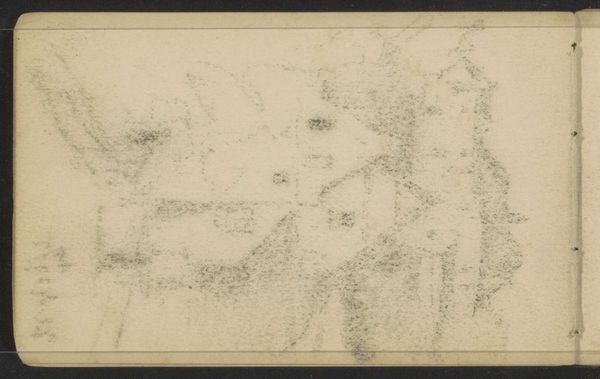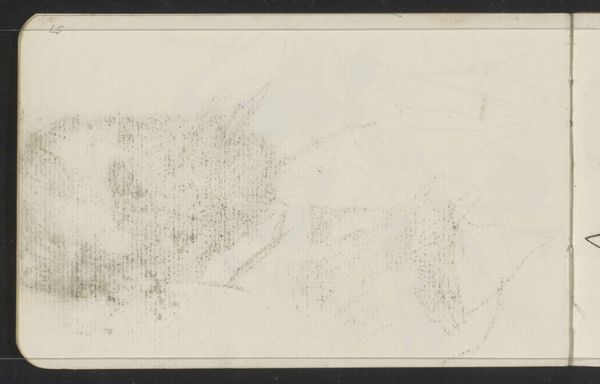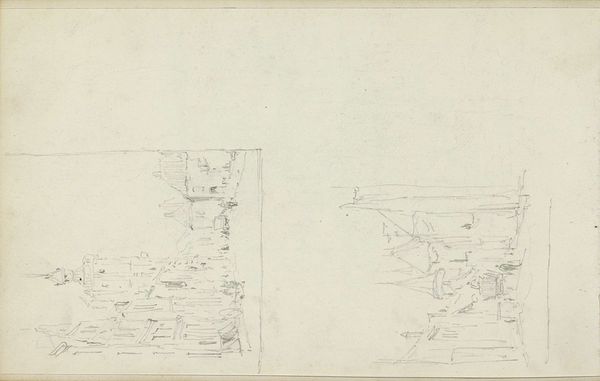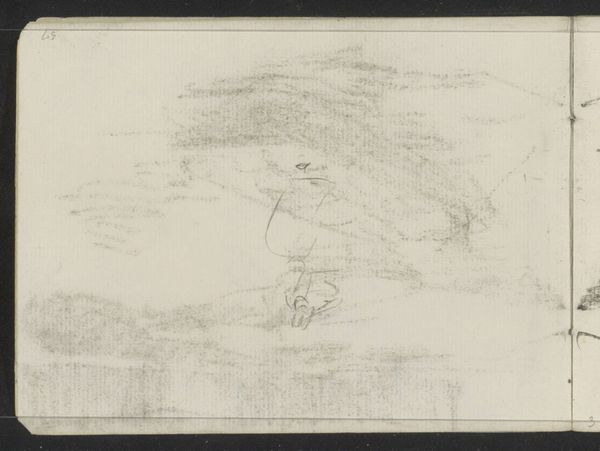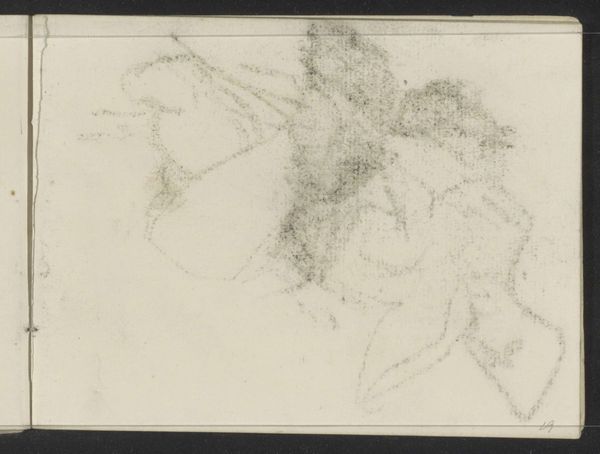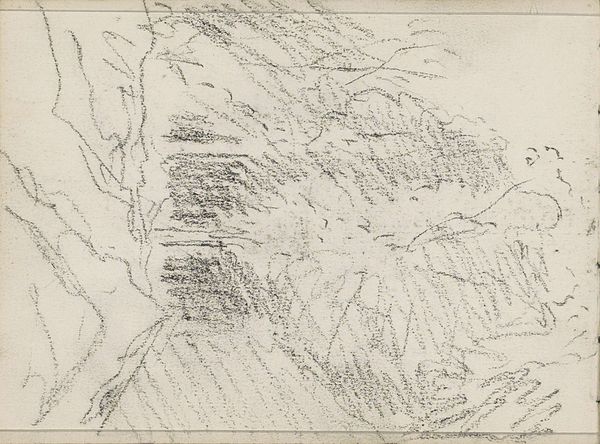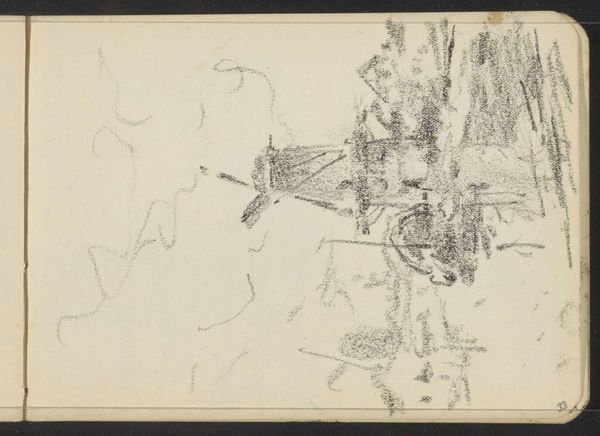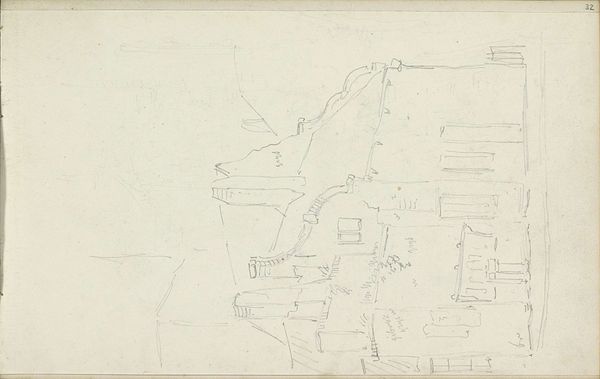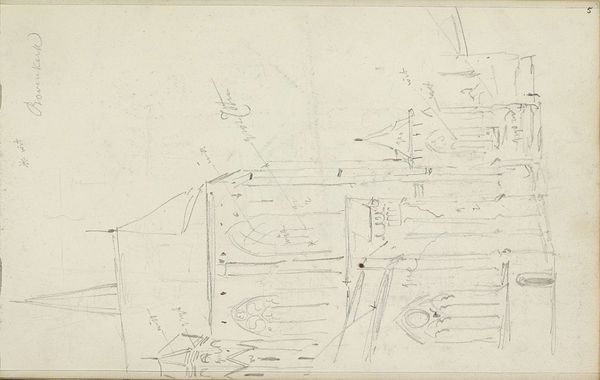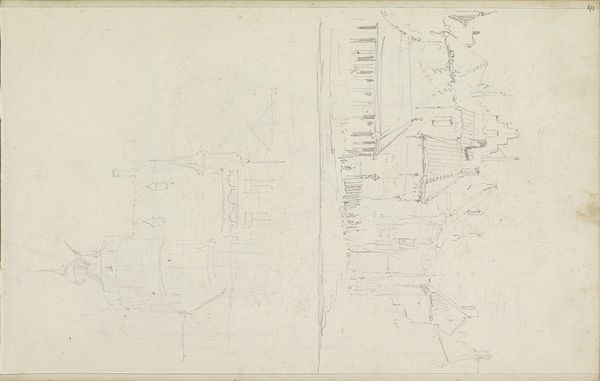
Copyright: Rijks Museum: Open Domain
Curator: Well, hello there! What catches my eye is Isaac Israels’ "Abklatsch van de krijttekening op blad 27 verso." Created sometime between 1886 and 1934, it’s a drawing rendered in graphite on paper. What do you make of it at first glance? Editor: My first thought is 'ephemeral.' It feels like a fleeting memory, sketched lightly so as not to disturb the fragile peace. Almost a ghost of an image. Curator: Oh, “ghost” is good. It's a rubbing, you see, so the impression is intentionally faint, giving it that ethereal quality. Israels was known for capturing those everyday fleeting moments, embracing that sense of momentary beauty through impressionism. Editor: Yes, Impressionism lends itself to capturing light and motion, making things seem more transient. Looking closer, are those figures, maybe in carriages? The wheels look prominent. Curator: Spot on! He's portraying scenes from city life, capturing movement, with a fascination for depicting people. And you picked up on the carriages—they definitely speak to an era of change, industrial progress, almost. Editor: There's something timeless in the choice of subjects... transportation. What would those forms and gestures mean to contemporary eyes accustomed to movement? The carriage wheel itself—circle of time or chance? I think that it would really invite viewers to engage their cultural memories. Curator: That's wonderful. It's almost as if Israels isn't just showing us what he sees but inviting us to see what we feel. I'm taken with the medium too... it reminds me how something fragile can capture such energy. Editor: A poignant glimpse. Perhaps it can ignite questions about the traces we all leave. Curator: Beautifully put, truly. These subtle yet telling "ghosts" offer so much room for contemplation. Editor: Precisely! Making this sketch, even unfinished, more powerful.
Comments
No comments
Be the first to comment and join the conversation on the ultimate creative platform.
